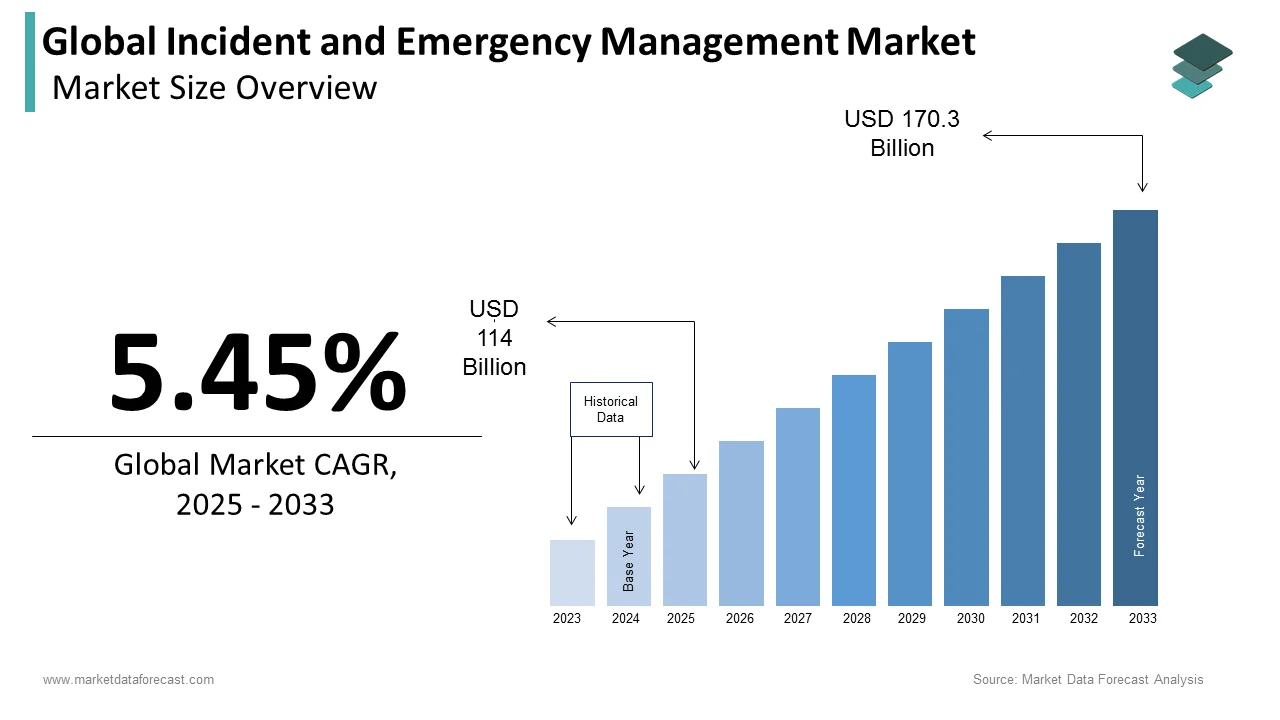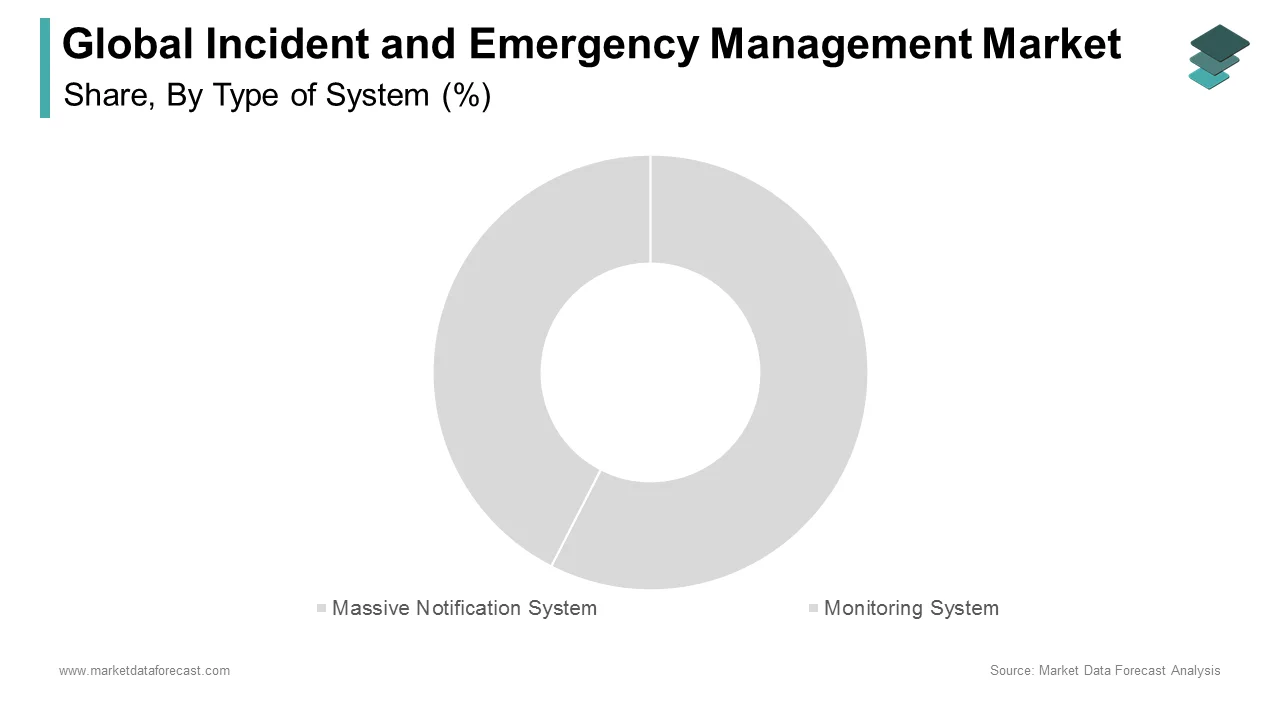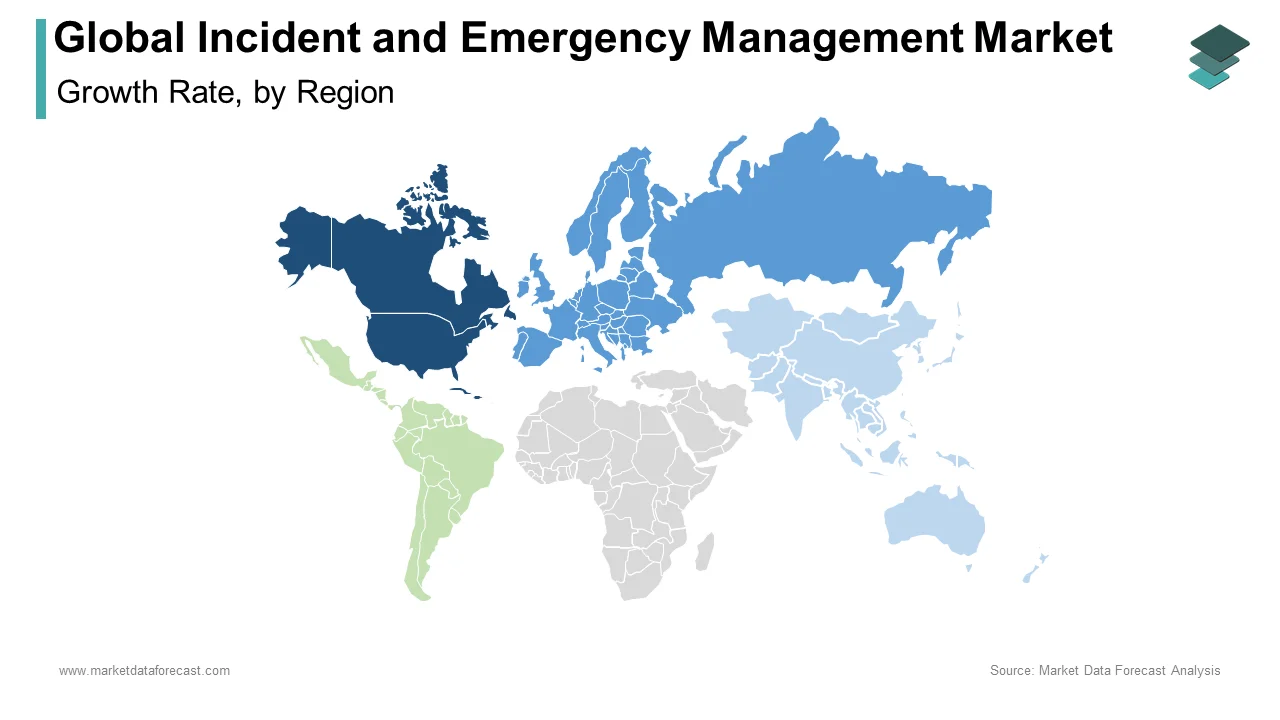Global Incident and Emergency Management Market Size, Share, Trends & Growth Forecast Report By Type of System (Massive Notification System, Monitoring System and Others), Communication Technology (First Response Tools, Satellite Phones and Others), Sector and Region (North America, Europe, Asia-Pacific, Latin America, Middle East and Africa), Industry Analysis From 2025 To 2033.
Global Incident and Emergency Management Market Size
The global incident and emergency management market was worth US$ 108.1 billion in 2024 and is anticipated to reach a valuation of US$ 174.3 billion by 2033 from US$ 114 billion in 2025. It is predicted to register a CAGR of 5.45% during the forecast period 2025-2033.

Incident and emergency management refer to a standardized approach to preventing and managing severe occurrences or humanitarian emergencies. It works on integrating and implementing emergency systems and solutions across all government and non-government platforms. Incident management is a form of management that aids in restoring high-quality service operations to mitigate the potential impact on users and businesses. The incident response team (IRT), the incident management team (IMT), and the Incident Command System (ICS) are often involved in incident management. Still, the emergency market is the sort of market favored in everyday life for risk avoidance. The term "emergency management" refers to the efforts of enterprises or communities to organize or prepare for the resources and personnel needed to recover or reduce the impacts of man-made or natural catastrophes and acts of terrorism. Emergency and incident management plays a vital part in protecting the community. Several countries have specific departments to establish effective emergency and crisis solutions. In addition, several businesses and organizations have begun building emergency response solutions to reduce the dangers.
MARKET DRIVERS
The growing number of natural disasters and terrorist activities propel the growth of the incident and emergency management market.
The increasing frequency and severity of natural disasters such as earthquakes, hurricanes, and floods are promoting the need for incident and emergency management to curb the impact of these events. Incident and emergency management help in various ways, such as in the aftermath of natural disasters, by providing real-time information and guidance, coordinating response efforts, and tracking and managing resources. These can help further identify the potential risks and avoid the same repetitions in the future. Furthermore, across the world, the number of terrorist attacks and threats is increasing considerably, which is resulting in the growing demand for emergency systems to limit the impact of such impacts and protect the public.
In addition, factors such as the increased need for security and protection solutions due to implementing regulatory policies for public safety and emergency preparedness lead to the growth of the global incident and emergency management market. Government regulations ensure the proper implementation of safety and emergency preparedness measures that promote the adoption of these systems.
Furthermore, the growing number of smart cities should support quick evacuation and surveillance systems, which is expected to fuel the growth of the incident and emergency management market. In addition, it is expected that using state-of-the-art aircraft for terrorist attacks will meet the needs of the incident and emergency systems. Besides, higher installation and maintenance costs and the use of advanced technologies by terrorist groups are anticipated in attacks to increase the demand for the incident and emergency management solutions. Furthermore, the growth of the smart city market is leading to the adoption of intelligent surveillance and evacuation systems, which is a significant factor in the market's growth rate.
MARKET RESTRAINTS
Factors such as increased economic losses from natural disasters, increased number of terrorist attacks, and implementation of government mandates to mitigate these emergencies hamper the growth of the incidence and emergency management market. In addition, factors such as the growing number of fake terrorist attacks and high false alarms hamper the incident and emergency management market growth. Furthermore, a lack of emergency and incident management, education, and training may hinder market growth over the forecast period. Even though there are solutions executed for incident and emergency management, the leading solutions that have aging technology and are outdated are predicted to hinder market growth.
REPORT COVERAGE
|
REPORT METRIC |
DETAILS |
|
Market Size Available |
2024 to 2033 |
|
Base Year |
2024 |
|
Forecast Period |
2025 to 2033 |
|
Segments Covered |
By Type of System, Communication Technology, Sector, and Region |
|
Various Analyses Covered |
Global, Regional, & Country Level Analysis; Segment-Level Analysis, Drivers, Restraints, Opportunities, Challenges; PESTLE Analysis; Porter’s Five Forces Analysis, Competitive Landscape; Analyst Overview of Investment Opportunities |
|
Regions Covered |
North America, Europe, Asia Pacific, Latin America, the Middle East, and Africa. |
|
Market Leaders Profiled |
IBM (United States), NEC Corporation (Japan), Hexagon (Sweden), Esri (United States), NC4 (United States), Intermedix Corporation (United States), Eccentex (United States), The Response Group (United States). |
SEGMENTAL ANALYSIS
By Type of System Insights

Based on the type of system, the massive notification system is considered to have the largest share of the market during the forecast period. With a massive notification system, many notifications can be sent via various channels to many people quickly. These systems play a vital role in alerting people about potential dangers and giving instructions regarding how to be safe in emerging situations. Considering such system advantages, the segment's adoption is growing, resulting in segmental growth.
By Communication Technology Insights
Based on communication technology, the first response tools segment is expected to grow at the highest rate in the incident and emergency management market over the forecast period. The segment growth is attributed to using these devices during emergencies, which involve wearable devices like smart glasses, smartwatches, wearable cameras, and many more.
By Sector Insights
Based on the sector analysis, the BFSI segment is predicted to lead in the global incident and emergency management market during the forecast period. The factors responsible for the segment growth are increasing the latest technologies and solutions propelling the growth. Moreover, a lack of awareness may restrain the market.
REGIONAL ANALYSIS

Regionally, the North American incident and emergency management market held the leading share of the global market in 2024. It is projected to be the leading regional segment worldwide during the forecast period owing to factors such as a focus on research and development of new technologies to remain prepared for emergency-natural calamities and terrorist attacks. In addition, the U.S. is more prone to natural disasters, and most states are likely to have hurricanes, droughts, earthquakes, and floods.
The European incident and emergency management market is the second-largest global incident and emergency management market, followed by North America during the forecast period. The growth is due to factors such as a growing number of natural disasters and terrorist attacks, owing to strict regulations for public safety, and growing economic loss due to natural hazards and the need for emergency preparedness. The UK is leading the market growth of the period.
At the same time, the Asia-Pacific incident and emergency management market are expected to grow fast during the forecast period. Factors such as growing government initiatives to reduce the effects of disasters, in the same way, are increasing biohazards and terror attacks, which may lead the region to obtain technological advancement substitutes over the period. Furthermore, in countries like India and China, the governments of these countries have invested vast amounts in training their army soldiers to deal with such incidents, accelerating the growth of the APAC region. In addition, countries like India and China have invested hugely in advancing their airport infrastructure, which is expected to surge the incident and emergency management market growth during the forecast period.
The Latin American incident and emergency management market is expected to steady CAGR during the forecast period owing to the government regulations that ensure the proper execution of safety and emergency measures, promoting the acquisition of these systems. Therefore, Brazil from the Latin American region is expected to lead the market over the forecast period, followed by Mexico and Argentina.
KEY MARKET PARTICIPANTS
A few of the promising companies operating in the global incident and emergency management market are IBM (United States), NEC Corporation (Japan), Hexagon (Sweden), Esri (United States), NC4 (United States), Intermedix Corporation (United States), Eccentex (United States), The Response Group (United States), Haystax Technology (United States), Alert Technologies (United States), Crisisworks (United States), EmerGeo (United States), Veoci (United States) and MissionMode (United States). Government agencies, emergency and incident management providers, independent software vendors, consulting firms, systems integrators, value-added resellers (VARs), and security agencies. Managed Security and IT Service Providers (MSSP) are various types of participants in the incident and emergency management market.
RECENT MARKET DEVELOPMENTS
- The Isle of Wight NHS Trust Ambulance Service (IoW) has implemented Hexagon's computer-assisted messaging (I / D) system. This state-of-the-art incident management solution will address the need for emergency and non-emergency call management and dispatch on the island, improve collaboration with neighboring services, and reduce costs.
- NEC Corporation announced a large-scale disaster prevention system to the Meteorological, Climatological, and Geophysical Agency of the Republic of Indonesia (Indonesia). This massive disaster prevention system will collect seismic intensity and waveform information from newly installed seismometers at 93 sites in Indonesia.
- In July 2020, Intermedix outgrowth its emergency preparedness and responsive division, following the close of the healthcare division sale to R1 RCMInc.
- In June 2017, NC4’s team solution proved instrumental in the successful emergency preparedness simulation and operation of Gotham Shield. As a result, these agencies are increasingly turning to technology to communicate more effectively during disasters and ensure the citizens' protection and safety.
- In June 2014, Eccentex announced that it would partner with Genesys, a leading customer service provider and contact center solutions. This partnership will create cases to help organizations manage risk for critical functions involving emergency incident response, fraud, and customer onboarding.
Target group:
- Regulatory bodies
- Incident and emergency management solution providers.
- Independent software providers (ISV)
- Engineering offices
- Public safety and security providers
- VAR
- Managed Security Service Providers (MSSP)
This report offers the following:
- A complete context analysis, which includes an evaluation of the parent market
- Significant changes in market dynamics.
- Segmentation of the market to the second or third level.
- Historical, current, and projected market size in value and volume.
- Report and evaluation of recent developments in the industry.
- Market shares and strategies of the leading players.
- Segments of emerging niches and regional markets.
- An objective evaluation of the market's trajectory.
- Recommendations for companies to strengthen their presence in the market.
MARKET SEGMENTATION
This market research report on the global incident and emergency management market has been segmented and sub-segmented based on the type of system, communication technology, sector, and region.
By Type of System
- Massive Notification System
- Monitoring System
- Others
By Communication Technology
- First Response Tools
- Satellite Phones
- Others
By Sector
- BFSI
- Energy and Public Services
- Others
By Region
- North America
- Europe
- Asia Pacific
- Latin America
- The Middle East and Africa
Frequently Asked Questions
How big is the global incident and emergency management ?
The global incident and emergency management was worth USD 102.40 billion in 2023.
Does this report include the impact of COVID-19 on the incident and emergency management ?
Yes, we have studied and included the COVID-19 impact on the global incident and emergency management market in this report.
Which region will lead the incident and emergency management market in the future?
During the forecast period, such as North America and APAC are anticipated to grow at a healthy CAGR.
Which are the companies playing a leading role in the incident and emergency management market?
IBM (United States), NEC Corporation (Japan), Hexagon (Sweden), Esri (United States), NC4 (United States), Intermedix Corporation (United States), Eccentex (United States), The Response Group (United States), Haystax Technology (United States), Alert Technologies (United States), Crisisworks (United States), EmerGeo (United States), Veoci (United States) and MissionMode (United States) are some of the notable players in the incident and emergency management market.
Related Reports
Access the study in MULTIPLE FORMATS
Purchase options starting from $ 2500
Didn’t find what you’re looking for?
TALK TO OUR ANALYST TEAM
Need something within your budget?
NO WORRIES! WE GOT YOU COVERED!
Call us on: +1 888 702 9696 (U.S Toll Free)
Write to us: [email protected]
